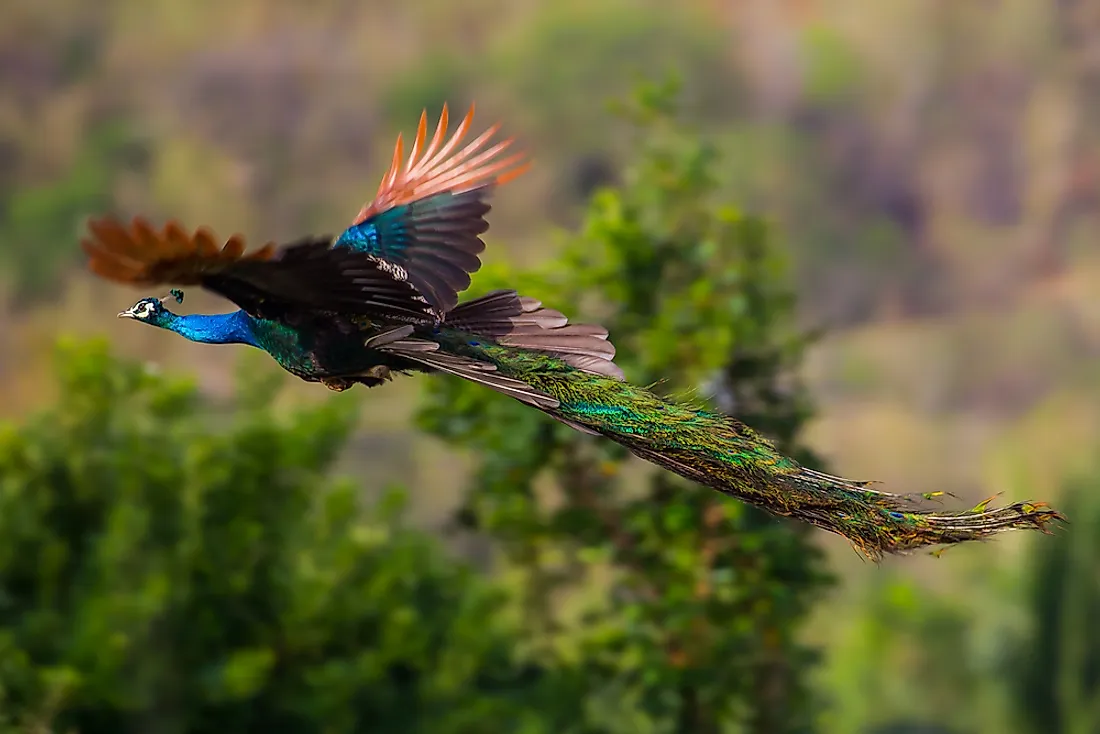Can Peacocks Fly?

Peacocks are male peafowl, which are species of birds that belong to the Phasianidae family. While male peafowl are referred to peacocks, female peafowl are known as peahens. Additionally, young peafowl are called peachicks. There are three species of peafowl: the Indian peafowl, which originates from the Indian subcontinent; the green peafowl, that originates from South Asia; and the Congo peafowl, that is indigenous to Africa, particularly from the Congo Basin. The tail feathers of a peacock can be as long as 6 ft, and can account for up to 60% of the bird's total body length. Although peafowl have massive bodies, they are able to fly.
Flight
Peacocks are capable of flight despite their large size. However, they cannot sustain their flight for long periods, and therefore flight is limited to short distances. Typically, peacocks flutter long enough to attain flight. The bird starts by running, then hops, and finally leaps into the air to fly. The large plumage plays a significant role and assists the bird when it is about to land by allowing the peacock to glide to the ground until it lands on its feet. Peacocks often only fly when faced with danger. Surprisingly, the peacock's long tail feathers do not to impact the bird's ability to take off. Although peacocks fly for short distances, they can reach speeds of up to 10 miles per hour.
Diet
Peafowl typically eat plant parts such as seeds and flowers. They also eat insects and other small animals like amphibians, reptiles, and arthropods. In the wild, peafowl scavenge for food by scratching the ground where leaves are littered, especially in the morning or at dusk. During the hottest part of the day, the birds retreat to shade for shelter and to escape any danger. Peafowl are not choosy, and will eat almost anything that they can digest. Domestic peafowl can eat corn, oats, cooked rice, and even cat food, and also enjoy protein-rich foods, as well as vegetables and fruits.
Behavior
Wild peafowl often nest on the ground, roost in trees, and are typically terrestrial feeders. All species of peafowl have been observed to be polygamous. Male peafowl (peacocks) have metatarsal spurs, which are thorn-like features on the legs that are used in intraspecific territorial fights with other birds of the same species. During courtship, peacocks produce vocalization, which is the primary way of attracting peahens. Research suggests that the intricacy of vocalization combined with the display of the peacock’s train of feathers is used to attract peahens.
Lifespan
Peacocks have a lifespan of about 25 years, which is relatively long compared to other closely related birds such as chickens, which can usually live between seven and eight years, or turkeys, which can live for about ten years.







